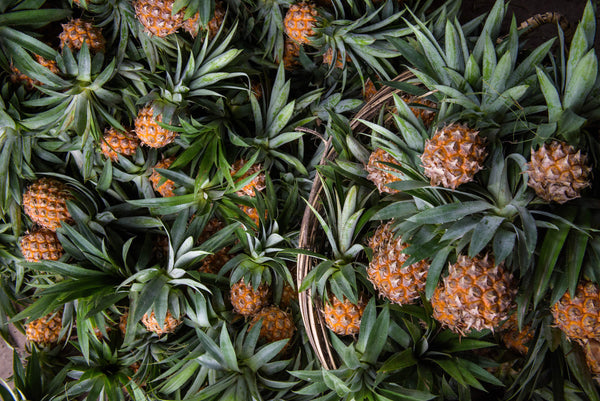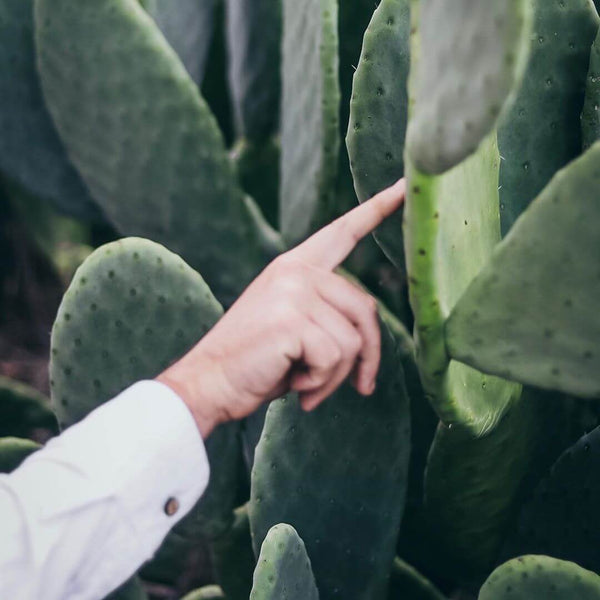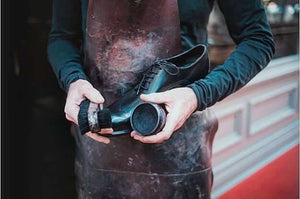The Path to Sustainable Shoes
Jun 15, 2020
Welcome to part four of four in our sustainable series: The path to sustainable shoes. If you read our previous posts you might be wondering what kind of material a shoemaker could use for a sustainable shoe.
Vegan leather made from synthetic materials come to mind but there are many other modern options that can replace leather.
Andrew Mcdonald is experimenting with how he can reduce his environmental impact in collaboration with Sustainable Pineapple, a sustainable consulting agency who is helping small businesses to become more ethical, by using sustainable materials such us pineapple, orange skin and cactus.
In this article we go into detail about the future of sustainable materials and how they are being used in new products.
Piñatex

What is Piñatex?
Piñatex by Ananas Anam is a natural, non-woven material made from pineapple leaf fibre which can be used as an alternative to leather and petroleum-based textiles. It's strong, breathable, light, and flexible and can be easily stitched, embossed, and cut.How Piñatex was developed?
Piñatex is made from pineapple leaf fibre, which is a by-product of the agriculture industry. No extra land, water or pesticides are required to produce the raw material. The dyes used for Piñatex are GOTS approved and the resins comply with AFIRM standards.
Desserto

What is Desserto?
Desserto is a highly sustainable plant-based vegan-leather made from cactus, often distinguished by its great softness at touch while offering great performance for a wide variety of applications and complying with the most rigorous quality and environmental standards. The aim is to offer cruelty-free, sustainable alternatives, without any toxic chemicals, phthalates and PVC. The result, Desserto, the Cactus Vegan-Leather, is partially biodegradable and has the technical specifications required by the fashion, leather goods, furniture, and even automotive industries.
How Desserto was developed?
They select and cut only the mature leaves of the plant without damaging the cactus itself, so every 6-8 months they will have a new harvest. Also, they do not use an irrigation system for the cactus, it grows with rainwater and the earth minerals which are rich in Zacatecas, Mexico, and great for the variety of cactus that they plant. The selected cactus is very resilient and strong, it can handle low temperatures during winter without dying and its thorns are very small so it’s easier and safer for their agriculture team to harvest.
Lactae Hevea

What is Lactae Hevea?
Lactate Hevea sole is the result of the refinement of an entirely natural product, the hevea milk harvested at the heart of tropical plantations which are regularly maintained and constantly renewed.
The harvest of the hevea milk, far from weakening the tree, actually helps it to flourish. By the time one end of the part which has been cut has been reached, the other end has regenerated and a new cycle can begin.
How Lactae Hevea was developed?
No natural forest is cut down. After 25 years of exploitation, the old tree is felled and a new tree is planted. The end product of an environmentally-friendly, artisanal process carried out entirely by hand by the craftsmen of a human-sized company, the LACTAE HEVEA® sole is in keeping with a sustainable development approach.
What do you think of these new materials? Are you looking forward to seeing more sustainable products? Email us at enquiries@andrewmcdonald.com.au and let us know.

